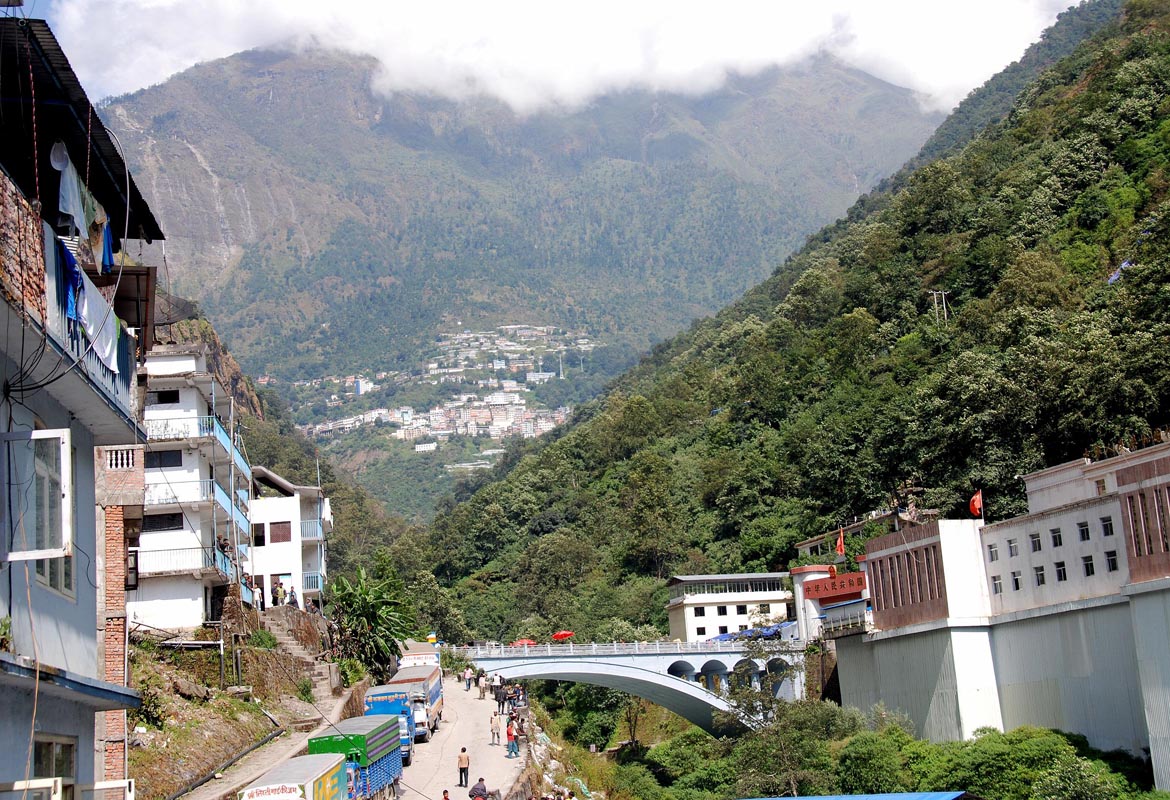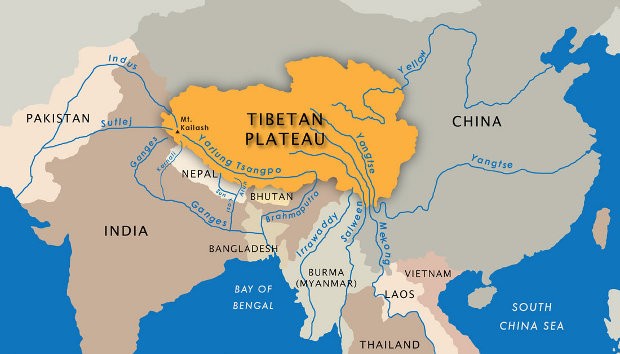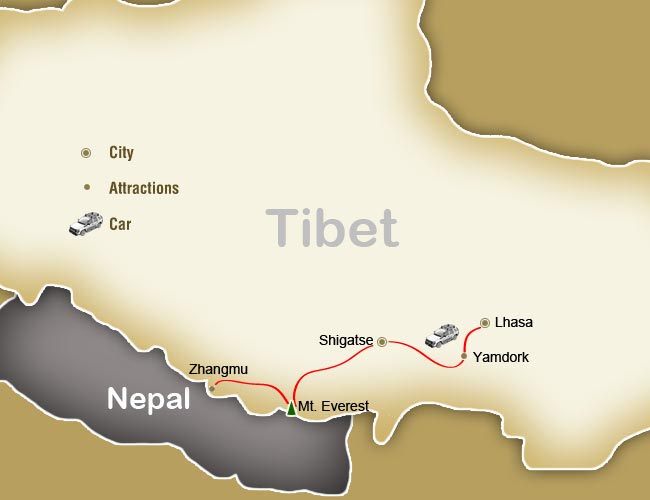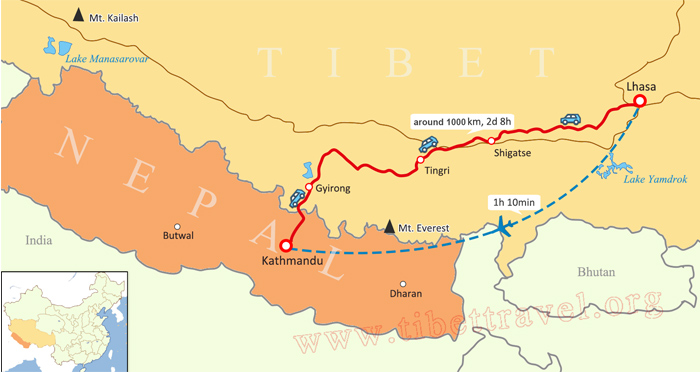China and India are increasingly in competition over trade with Nepal; both countries share borders with Nepal, with Chinese-occupied Tibet to the north and India to the south.
The Global Times, a state-run newspaper in China, has published an article claiming that China’s existing infrastructure in Tibet gives it an advantage over India in the battle to expand trade relations with Nepal in the coming years. Tibet’s location makes it a critical component of China’s efforts to increase trade with Southeast Asian nations, but it also makes it most likely to bear the brunt of the economic trade battle with India.

Zhangmu or Dram in Tibetan and Khasa in Nepali is a typical border town (border between Nepal and Chinese occupied Tibet)
Photo:Eternal Journeys
Currently, the Chinese controlled town of Zhangmu in Tibet (also known as Dram in Tibetan) is responsible for 82 percent of the trade activity between China and Nepal. Roughly 200 cargo trucks cross into Nepal from Zhangmu each day. $243.1 (£200) million worth of trade passed through Zhangmu in the first quarter of this year. In contrast, $10 (£8) billion passed across the China-Vietnam border last year.
Historically, India has controlled 60 to 70 percent of Nepal’s trade activity due to its better existing road infrastructure, while China has secured only 10 percent.
Both nations are now attempting to expand railway infrastructure in Nepal in order to increase trade activity, and create a rail network that would connect Tibet, Nepal and India with Bangladesh and Myanmar.
China is currently expanding the Lhasa-Shigatse railway to reach Gyirong county, a project which will be completed in 2020. This timeline would allow Kathmandu and Gyirong to be connected by 2025. Nepali Prime Minister Prachanda recently stated that India and Nepal are discussing the possibility of building a railway between Mechi (trans-boundary river flowing through Nepal and India) and Mahakali.
The Global Times article says that competition from India, and the subcontinent’s high growth and development trajectory over the next decade imposes economic pressures on China, most of which will fall on the Tibet Autonomous Region. However, the article states that China’s “considerable support” for Tibet has given Tibet “the upper hand over India in terms of infrastructure development and has established sound economic cooperation relations with neighboring provinces and cities”. It suggests that China will focus on exploiting Tibet’s advantages over India and maintaining political stability in the region in the years to come.
The Global Times article, which was published on October 20, has been reported, but not commented on, in Indian newspapers including the Times of India and the Hindustan Times.






 Print
Print Email
Email